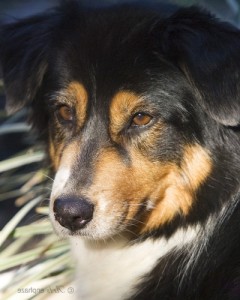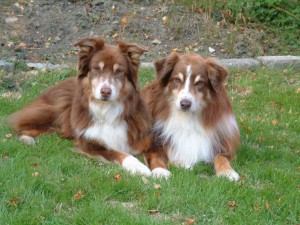
The breed standards state that Australian Shepherds can come in some combination of two basic body colors (black and liver), one pattern (merle), and two trim colors (white and tan.) Of these, the pattern merle is described as two “colors”: Blue merle and red (liver) merle. The base color (black or liver), merle, tan, and white are all distinct genetic traits and breeders need to understand how they are inherited.
Black/liver
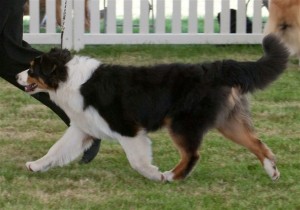
Black is dominant to liver, therefore a liver colored dog (whether merle or not) can only plas along genes for liver and when bred to another liver-colored dog all resulting puppies will be liver. A black dog, on the other hand, may produce puppies of either color if it happens to carry a liver version of the gene, referred to as ‘red factored”. Those with no liver version will never produce liver colored offspring. You can determine whether a black dog is red factored several ways: If it has a liver parent or offspring, by doing a DNA test,
or by breeding it to a liver colored dog to see if you get liver puppies. If you try the test mating you need six puppies to be 98% sure of the result – all black would mean the dog is not red factored but even one liver pup would mean it is.
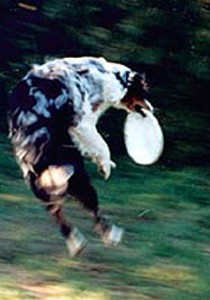
The Merle Pattern
A blue merle is a black dog with the merle pattern; a red merle is a liver dog with the merle pattern. All the merle gene does is determine whether or not a dog is merle. This gene is an incomplete dominant. Two dominant copies produce a “double merle” which will most likely have serious eye defects and may be deaf. Two recessive copies result in a dog that is not merle. One of each is a normal merle, a state midway between the two homozygous forms.
There is also another version of this gene, called cryptic, that falls in dominance between the other two. A cryptic merle dog will have only a small merle patch somewhere on the body. It is possible, if that patch lies somewhere that also gets a white marking, that you might not know a dog carried this version of the gene. While it was once thought that these dogs would, like normal merles, produce defective double merles if bred to another merle dog, this does not appear to be the case. Cryptic merles might be bred to a merle or a non-merle with no fear of merle-related defects.
Tan points are caused by one of several versions of a gene called agouti. Only two of these are contributors to normal Aussie coat coloration, the one that causes tan and another that gives no tan. Most Aussies have two copies of the tan version of this gene, though it is possible that some Aussies without tan may have two copies of the recessive version. However, there is a weasel in this particular hen-house in the form of a gene called K. If a dog has a single copy of the dominant version of K it will not have tan trim. This gene version has been found in Aussies though most have two copies of the version that allows tan trim. Therefore, lack of tan trim may be either dominant or recessive depending on whether it is caused by versions of agouti or K. If you have a line where lack of tan is common the breeding patterns for the trait should tell you which you are dealing with – though it is possible that some lines might have both and be difficult to predict.
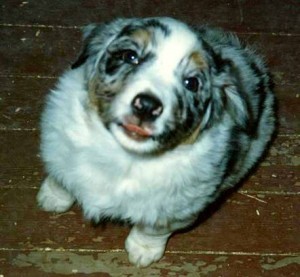
White
White markings are the most genetically complex aspect of normal Aussie color. Only two white marking genes have been clearly identified so far in dogs. One causes the type of pattern seen in Boxers. The other is associated with the “irish” pattern seen in collie-type dogs, like the Aussie. However, the specific extent of these markings on any individual dog can be highly variable due to the actions of other genes or gene regulatory factors. In general, though, less white is dominant to more: Two dogs with little white can sometimes produce offspring with lots of white, but two with maximum white trim will not produce a puppy with almost none.

